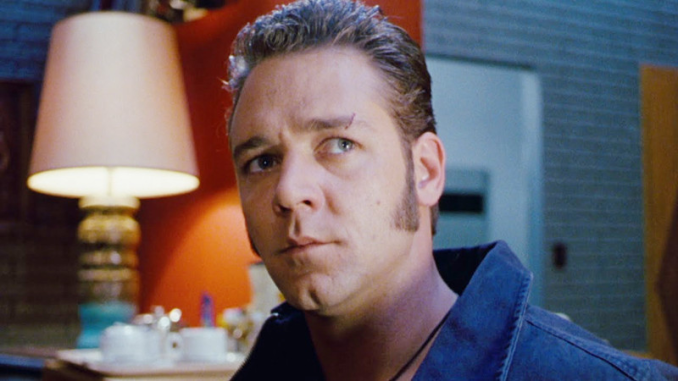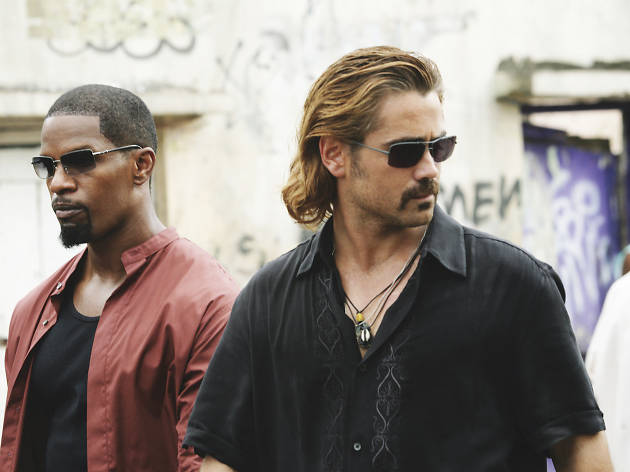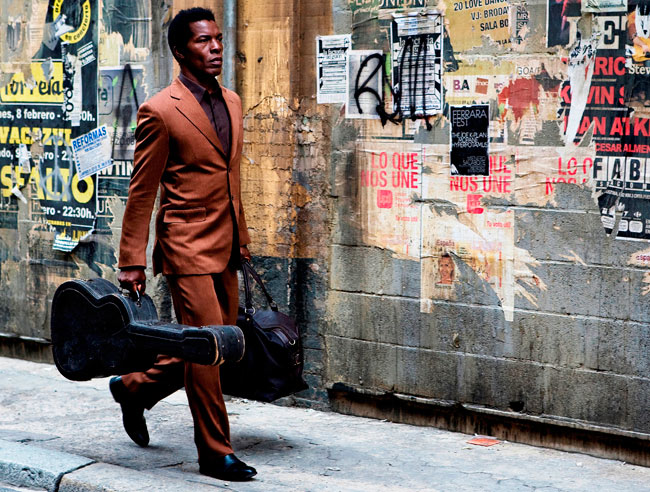
The films described in this list have been undervalued as interesting, thoughtful variations of the thriller genre. Oftentimes, their intentions have been misinterpreted, or they were maligned by the release of more popular, popcorn fare.
Whilst the thriller’s central purpose is to deliver action and suspense, some of these titles additionally use the genre as a vessel to explore deeper ideas. In other instances, they were entertainment-focused, but did not resonate with audiences until retrospective appreciation, years later. Furthermore, the sway of critics opinions also has an influence upon audiences’ rejection of films that, in fact, have a lot to offer.
1. The Born Losers (1967)

Loner Billy Jack (Tom Laughlin) attempts to save a town from an invading outlaw biker gang.
Fundamentally, The Born Losers is an exhilarating piece of grindhouse cinema, superior in execution to the unfocused roughness of other ‘60s bikesploitation movies. In addition to its countercultural stylishness, The Born Losers shocked audiences, for its depictions of violence, rape and homosexuality, leading it to be banned in Hungary and Sweden.
Whilst it serves primarily as grimy entertainment, the movie also possesses more thought-provoking concerns. Through its protagonist, Billy Jack, the screenplay delves into the discrimination of Native Americans, the marginalisation of Vietnam War veterans and offers a criticism of police brutality. As a revenge movie, it espouses the anti-authoritarian philosophy of the then-burgeoning hippie movement.
2. The Passion of Darkly Noon (1995)

In North Carolina’s Appalachian Mountains, Darkly Noon (Brendan Fraser) escapes from a cult. He is rescued by the seductive Callie (Ashley Judd). During his stay, Darkly grows infatuated with Callie. This proves to be an issue when Callie’s husband Clay (Viggo Mortensen) returns.
The Passion of Darkly Noon is a film unlike any other. Its uniqueness is built through John de Borman’s peculiar, majestically dreamlike cinematography, evoking the paintings of Andrew Wyeth and Edward Hopper. In one iconic scene, Darkly Noon watches a giant silver shoe inexplicably floating down a river. In another, the characters behold a family emerge from the forest’s shadows, accompanied by an elephant. Unusual for a thriller, The Passion of Darkly Noon is pregnant with significant subtext.
Playwright turned filmmaker Philip Ridley addresses unrequited love, sexual repression, perversion and jealousy, whilst examining the corollaries of blind conformity. The film is populated with fairytale-like figures, from Viggo Mortensen as mute carpenter Clay, to Lou Myers as the eccentric, verbose undertaker Quincy. Boasting an explosive climax, The Passion of Darkly Noon’s hallucinogenic artistic accomplishment and thematic potency is deserving of far more attention than it has so far received.
3. The Immortals (1995)

Nightclub owner Jack (Eric Roberts) recruits eight criminals to synchronously commit four different heists. Jack’s mafioso boss (Tony Curtis) suspects it was Jack who orchestrated the robberies and invades his nightclub. The cast includes: Chris Rock, Tia Carrere and William Forsythe.
Superficially, The Immortals is an action-packed, funny caper movie, distinguished by its depiction of multiple heists. What is more, it is stylish, with the slick costumes and evocative set design condensing the coolness of 1990s fashion. That said, The Immortals differs from other crime movies for its message. For the four heists, Jack strategically pairs opposites together. A sexist with a woman, a homophobe with a homosexual, a racist with an African American and an intellectual with a mentally disabled man.
At first, the pairs clash, with the prejudiced member expressing their ignorance and stigma. As the movie progresses, however, they begin to develop affection, understanding and empathy for one another. As a result, The Immortals gives the audience the experience of questioning their own preconceptions of different people. Therefore, The Immortals is an important movie to watch, as it encourages humanity, unity and understanding in the face of diversity.
4. Heaven’s Burning (1997)

Midori (Youki Kudoh) runs away from her new husband (Kenji Isomura) only to be taken hostage during a bank robbery. Whilst on the run, Midori begins to fall in love with her captor, Colin (Russell Crowe).
Heaven’s Burning is an Australian rendition of the neo-noir road movies of 1990s American cinema, such as Wild at Heart (1990) and True Romance (1993). It contains all the trappings one would expect from the genre: a bank heist, a cool vintage car, vengeful gangsters, motels and shootouts. It substitutes the Mojave Desert with the outback, coloured with ironic Australian humour, especially through a wheelchair-bound accordionist.
One particularly interesting character arc sees a straight-laced Japanese businessman mutate into a murderous biker. Whilst moving at an energetic pace of whirlwind violence, at heart, Heaven’s Burning is a highly romantic movie. Russell Crowe and Youki Kudoh (known for starring in Jim Jarmusch’s Mystery Train) forge touching chemistry on a mythic scale, echoing Badlands (1973) and Romeo and Juliet.
5. City of Industry (1997)

Four criminals commit a successful jewellery store robbery. Skip (Stephen Dorff) kills two team members and escapes with the jewels. Roy (Harvey Keitel) tries to track Skip down and reclaim his share.
On the surface, City of Industry is a gritty variation on the caper genre. Rather than detailing a police chase, it sees a criminal pursuing another member of his crew. Refreshingly, it is set amongst the world of Chinese triads, rather than the usual mafia choice. City of Industry’s Generation X style and ‘90s soundtrack are complimented by a cool, conniving performance from Stephen Dorff. Lucy Liu and Elliot Gould also make cameos.
However, though it is not explicitly stated, City of Industry has a palpably existential undercurrent. This is brought to life by Harvey Keitel’s intelligent, layered acting, where he expresses loneliness and melancholy. Whilst the plot follows the roadmap of genre, the introspective tone welcomes differing interpretations. Keitel’s emotions are further expressed through the doleful use of neon lighting.
6. Held Up (1999)

Stranded in the southwestern desert, Michael Dawson (Jamie Foxx) finds himself trapped in a convenience store where a robbery is underway. The store is surrounded by gun-toting police officers.
Due to being almost entirely set in one location, Held-Up has a character-driven stage play feeling, enabling its comedic ensemble to flourish. Typically, the comedy is dominated by a lighthearted turn from Foxx, whose talents remain entertaining and watchable throughout. He is supported by celebrated character actor Barry Corbin, as an idiotic, trigger happy sheriff.
With much of the duration consisting of a police standoff, local townsfolk arrive with deckchairs, beverages and snacks to spectate. Although some may find this neo-western’s humour silly, its entertainment value makes it undeserving of a mere 17% Rotten Tomatoes rating.
7. Miami Vice (2006)

Detectives Ricardo Tubbs (Jamie Foxx) and James Crockett (Colin Farrell) attempt to take down a drug racket.
Upon its release, Miami Vice was misunderstood for its serious tone, in comparison with the ‘80s series, and considered a weaker effort from Michael Mann. However, the film’s standing has improved over the years, with critics now recognising Mann’s desire to take the source material in a different direction. One of Mann’s talents is to create mainstream crime movies that retain an authorial style. Viewing one frame of Miami Vice assures audience members that they are watching a Mann movie. It is bursting with the director’s attention to atmosphere, constructed through his penchant for chiaroscuro nighttime scenes, blue neon and modern cityscape settings.
The choice of grainy, handheld, digital cinematography lends to Miami Vice’s kinetic, realistic rawness. Meanwhile, the facial closeups anchor the audience in the characters’ emotional arcs. Furthermore, like all of Mann’s movies, the cold foreboding and violence is contrasted with an intensely romantic charm. This is brought to life in a dance scene, when Colin Farrell and Gong Li’s characters sojourn to Cuba on a speedboat. Miami Vice’s aesthetic of pink Florida sunsets and atmospheric prioritisation proved to be influential upon Harmony Korine’s Spring Breakers (2012).
8. The Limits of Control (2009)

Isaach de Bankole stars as a laconic assassin carrying out a job in Spain.
Indie director Jim Jarmusch has stated that his intention with The Limits of Control was to shoot “an action movie with no action.” Through a travelogue format, with a psychedelic soundtrack from Boris, Jarmusch reads into the poetry of hitman movies like Le Samouraï (1967). With meditative, hypnotic photography, DP Christopher Doyle focuses on the textural evocation of lonely, atmospheric hotels. To Jarmusch, the sound of night traffic, moonlight on a bedspread and many more beautiful, symbolic details are more important than the oblique plot.
The Limits of Control respects the audience’s intelligence, by providing a narrative open to interpretation. Each of the characters postulate a different philosophy about life. Gael García Bernal’s cowboy enthuses about the properties of psychedelic drugs. Tilda Swinton’s Stetson-hatted character is a cinephile. John Hurt’s musician is interested in bohemians, whereas a yuppie billionaire, played by Bill Murray, despises them. Through these perspectives, Jarmusch demonstrates that, like the film itself, one’s interpretation of life’s meaning is subjective.
In an interview with The Wire, Jarmusch explained: “we deliberately tried to take away things that would be expected from the film. Which is the absolute opposite of the American approach: ‘okay, what demographic, what do they want, what do they expect, give it to them.’ It was like, let’s see, can we make an action film with no action in it? Can we make a narrative where the plot is just like a series of repeated variations on something? Can we have a film with characters that have no background, no past, no present, no name, we don’t know what they represent, they’re metaphorical? These are all the things that people expect, so we were trying to remove them, with the predictable results, in the United States, of not a whole lot of people being interested in the film. That’s okay, you know, we thought it was a successful experiment on our part.”
9. Dom Hemingway (2013)

Upon his release from prison, safecracker Dom Hemingway (Jude Law) travels to France to receive compensation from his former boss (Demian Bichir). When his money is stolen, Dom returns to a life of crime.
Initially, Dom Hemingway begins as a cockney gangster comedy, recommendable to fans of Sexy Beast (2000) and Guy Ritchie’s oeuvre. Jude Law steals the show with his foul-mouthed, hard-drinking, larger-than-life protagonist, professing a wealth of hilarious lines. Concurrently, Richard E. Grant echoes his finest performance in Withnail and I, as the quirky, one-handed, fashion-forward Dickie Black.
The Provençal villa they party at is filmed with an attention to its natural beauty and jet-set magic. With that said, the film’s English-set second half is markedly different to the comedic first. It evolves into a relatable, tragic parental drama, as Dom strives to reconnect with his estranged daughter and become a better man.
10. The Alto Knights (2025)

A chronicle of the rivalry between mafiosos Frank Costello and Vito Genovese (both played by Robert De Niro) in 1950s New York City.
The Alto Knights has proved to be a box office disaster, losing $36 million for Warner Bros. Although it does not cover any new ground, by recycling the style of Martin Scorsese, The Alto Knights is still an enjoyable gangster movie in its own right. It was penned by Goodfellas (1990) screenwriter Nicholas Pileggi. It uses the same voice over technique and narrative structure, yet looks into a previously unexplored area of mafia history: the Appalachian meeting. What is more, Pileggi weaves in the Italian American humour that made his earlier screenplays so successful.
Robert De Niro is tasked with playing two different characters and having them interact in several of the same scenes. A testament to De Niro’s talent, he crafts two distinct characters. His Vito Genovese is paranoid and hot-headed, whilst his Frank Costello is tender and rational. De Niro’s proficiency is matched by the accomplished acting of Debra Messing. Gangster movie fans are encouraged to discount The Alto Knights’ negative reputation and enjoy it for what it is: more of the same, but incredibly well executed.
Leave a Reply